| Old Spanish Fort Resort and Amusement Park 1820's - 1920's Bayou St. John at Lake Pontchartrain |
| Continued: A History of the Old Spanish Fort by Nancy Brister |
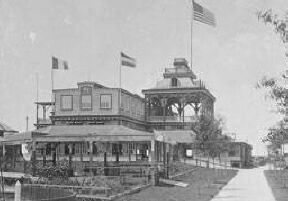
| The casino at Old Spanish Fort was built in 1881 and destroyed by fire in 1906. |
| A hotel, located on the site of the old fort, operated successfully from 1823 to 1878, when the property was purchased by Moses Schwartz, who added, over time, an amusement park, a casino, a theatre, a dancing pavillion, cabarets and several fine restaurants. These attracted well-known entertainers, orchestras and opera companies, as well as, many noteworthy guests from all over the country. Before long, Spanish Fort became known as the "Coney Island of the South." Among the restaurants were Over the Rhine and Tranchina's Restaurant, and the cabarets were Tokyo Gardens and The Frolics. Spanish Fort played an important part in the development of Jazz. Early Jazz musicians of all races and ethnic groups performed here and at other lakefront resorts, sharing ideas and techniques, nurturing the new musical genre. Some of the bands that played regularly at Spanish Fort were Armand Piron's N.O. Orchestra, Papa Celestin's band, Johnny Miller's N.O. Frolicers, Johnny Bayersdorffer's Jazzola Orchestra and many others early Jazz bands and musicians. -- Nancy |
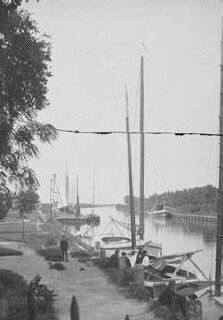
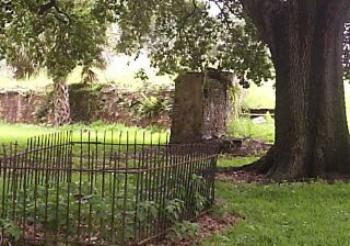
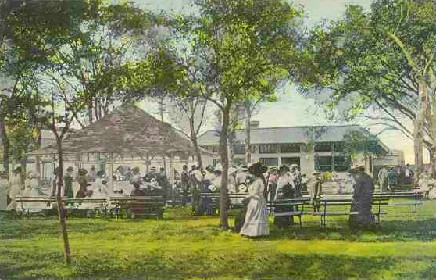
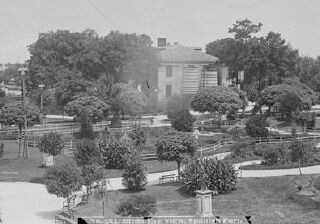
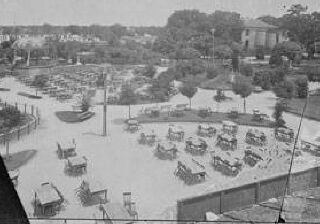
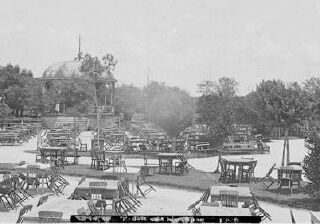
| Boats docked at Spanish Fort's pier |
| The park by the bandstand |
| Tables by the bandstand |
| Another view of the tables and the park |
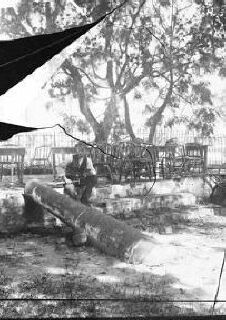
| Spanish Fort Resort |
| Man poses with a canon from the fort, 1890's. |
| The lonely grave at Old Spanish Fort. |
| Ad for Spanish Fort thanks to Infrogmation at Wikimedia Commonns. |
| In 1906, a massive fire destroyed many of the buildings. A new owner re-opened the amusement park, adding a roller coaster and ferris wheel and, also, established an electric railway from the city to the park. It remained popular for several years, but, by the mid-1920's, West End Resort and Amusement Park, also, on the lake, had wooed many of Spanish Fort's customers away. In the late 1920's, a project reclaimed land from Lake Pontchartrain, extending the shoreline out and away from the old fort, so that it was no longer actually fronting on the lake. It was during that time that the park closed its gates. The old fort sits today, crumbling, long abandoned and, for the most part, unnoticed. People pass by on their hurried errands every day, never knowing the rich history of the site where the founder of New Orleans first made encampment in 1699; where, in turn, French, Spanish and American flags flew over the first military fort established in the area; where tense soldiers maintained silent vigils alert for the enemy's approach; where, armed for battle, American farmers, shopkeepers (and a pirate or two) prepared to face the British in 1814; where, in its later incarnation, New Orleanians and many others from around the country and the world, sailed and dined and danced their way through a hundred years of history; a place where the new sound of Jazz music was nurtured and developed. And where the fort has been a silent witness to yet another hundred years. Except for the muted sound of traffic rushing by on a nearby thoroughfare, the only sounds that can be heard are the bayou's breezes dancing through the branches of the ancient oaks. Today, the fort's lone inhabitant is the occupant of a solitary grave. The unmarked grave sits inside of a rusting wrought iron fence - a soldier who's been left by his comrades to stand guard alone. The grave is said to be the resting place of a Spanish officer, Sancho Pablo, who fell in love with the daughter of a local Native American chief. The chief, who opposed the union, is said to have ended the romance by murdering the Spanish soldier. I don't know about the romance, but I found a 1915 postcard with a picture of the grave and this description: "Grave of Sancho Pablo, Commander of the Spanish Army, 1721-1741." Maybe the legend of the princess was invented to explain the mysterious sound of a woman weeping at the old fort, heard so often through the years by nearby residents, usually on moonless nights. Or, who knows? Perhaps the legend is true and she cries for Sancho Pablo still. -- Nancy |
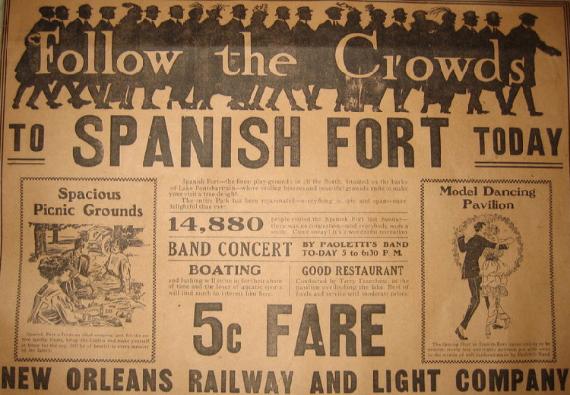
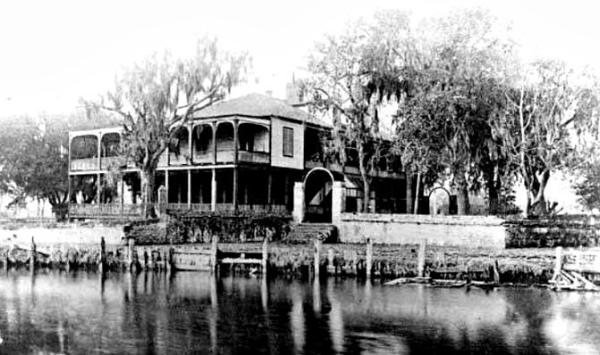
| Spanish Fort Hotel |